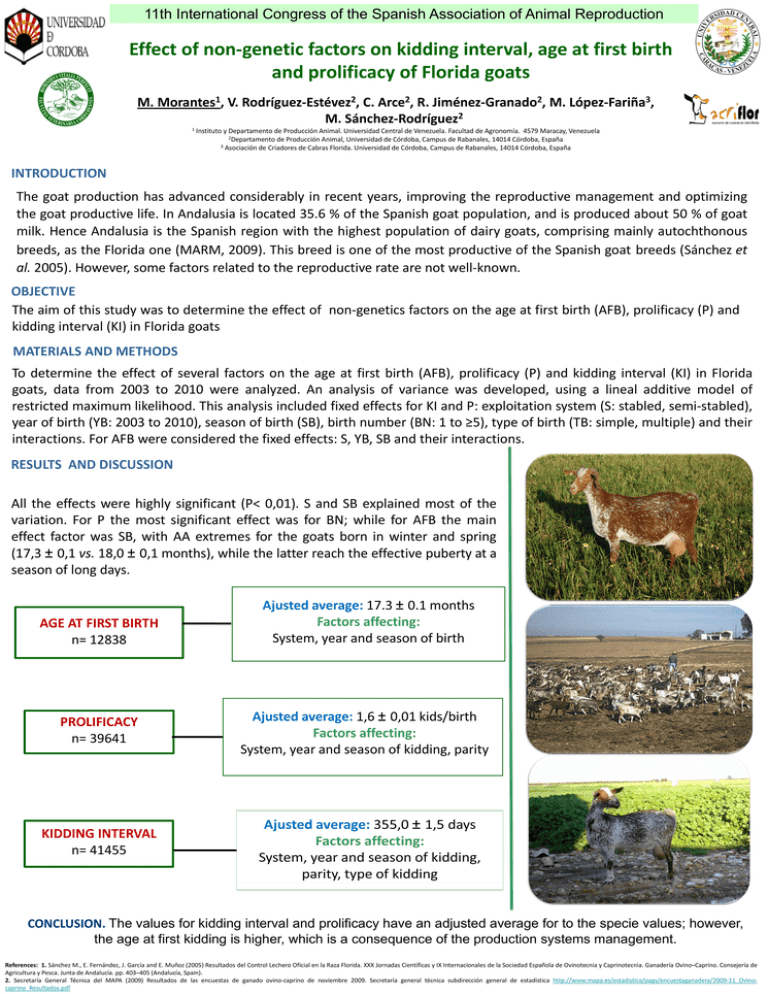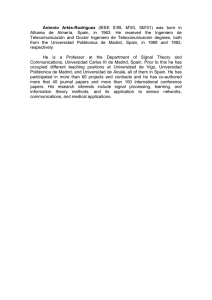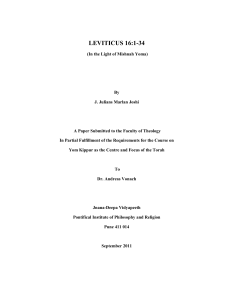Diapositiva 1
Anuncio

11th International Congress of the Spanish Association of Animal Reproduction Effect of non-genetic factors on kidding interval, age at first birth and prolificacy of Florida goats M. Morantes1, V. Rodríguez-Estévez2, C. Arce2, R. Jiménez-Granado2, M. López-Fariña3, M. Sánchez-Rodríguez2 1 Instituto y Departamento de Producción Animal. Universidad Central de Venezuela. Facultad de Agronomía. 4579 Maracay, Venezuela 2Departamento de Producción Animal, Universidad de Córdoba, Campus de Rabanales, 14014 Córdoba, España 3 Asociación de Criadores de Cabras Florida. Universidad de Córdoba, Campus de Rabanales, 14014 Córdoba, España INTRODUCTION The goat production has advanced considerably in recent years, improving the reproductive management and optimizing the goat productive life. In Andalusia is located 35.6 % of the Spanish goat population, and is produced about 50 % of goat milk. Hence Andalusia is the Spanish region with the highest population of dairy goats, comprising mainly autochthonous breeds, as the Florida one (MARM, 2009). This breed is one of the most productive of the Spanish goat breeds (Sánchez et al. 2005). However, some factors related to the reproductive rate are not well-known. OBJECTIVE The aim of this study was to determine the effect of non-genetics factors on the age at first birth (AFB), prolificacy (P) and kidding interval (KI) in Florida goats MATERIALS AND METHODS To determine the effect of several factors on the age at first birth (AFB), prolificacy (P) and kidding interval (KI) in Florida goats, data from 2003 to 2010 were analyzed. An analysis of variance was developed, using a lineal additive model of restricted maximum likelihood. This analysis included fixed effects for KI and P: exploitation system (S: stabled, semi-stabled), year of birth (YB: 2003 to 2010), season of birth (SB), birth number (BN: 1 to ≥5), type of birth (TB: simple, multiple) and their interactions. For AFB were considered the fixed effects: S, YB, SB and their interactions. RESULTS AND DISCUSSION AGE AT FIRST BIRTH n= 12838 PROLIFICACY n= 39641 KIDDING INTERVAL n= 41455 CONCLUSION. The values for kidding interval and prolificacy have an adjusted average for to the specie values; however, the age at first kidding is higher, which is a consequence of the production systems management. References: 1. Sánchez M., E. Fernández, J. García and E. Muñoz (2005) Resultados del Control Lechero Oficial en la Raza Florida. XXX Jornadas Científicas y IX Internacionales de la Sociedad Española de Ovinotecnia y Caprinotecnia. Ganadería Ovino–Caprino. Consejería de Agricultura y Pesca. Junta de Andalucía. pp. 403–405 (Andalucía, Spain). 2. Secretaría General Técnica del MAPA (2009) Resultados de las encuestas de ganado ovino-caprino de noviembre 2009. Secretaría general técnica subdirección general de estadística http://www.mapa.es/estadistica/pags/encuestaganadera/2009-11_Ovinocaprino_Resultados.pdf








